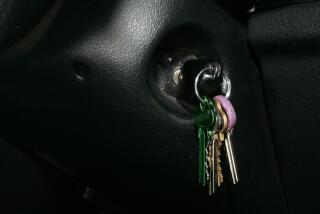Editorial: A minimum wage hike is just part of the solution to help the working poor
Starting today, most minimum wage workers in Los Angeles, Santa Monica, Pasadena, Malibu and unincorporated Los Angeles County will get a bump in their hourly pay — from $10 to $10.50 — as the first step toward a $15 minimum wage in 2020. For the rest of California’s workforce, the wage floor adopted by the Legislature earlier this year will hit $10.50 on Jan. 1 and $15 in 2022. Workers at companies with 25 or fewer employees will have to wait till next year for their raise; small businesses got a one-year delay under the local ordinances and state law.
The wage hikes should be good news for the lowest-paid workers, who struggle to afford housing, transportation and education in one of the most expensive regions in the nation. In less than a year, Los Angeles and California set two of the nation’s most aggressive and ambitious minimum wage mandates. It’s the beginning of a grand experiment to dramatically increase pay for the working poor with the hope of reducing poverty.
But even if raising the minimum wage lives up to its advocates’ predictions, that alone won’t solve the problems facing the working poor in California because low pay is just one of the challenges they face.
Experts should closely track the effect of the coming wage hikes on employment, job creation and welfare spending.
There is the exorbitant cost of housing in California’s coastal urban areas. Los Angeles has been deemed the least affordable rental market; workers need to earn more than $30 an hour to afford an average apartment. Housing in San Francisco and San Diego is prohibitively expensive too. There are various proposals to build more subsidized housing for low-income families, but the larger problem can be solved only by greatly increasing the supply of housing to meet demand. Gov. Jerry Brown has proposed loosening restrictions on new housing that, with some tweaks to address legitimate environmental concerns, could help build more homes and eventually reduce prices.
There is a lack of solidly middle-class jobs, which makes it harder to climb the economic ladder. The state, particularly Southern California, needs more jobs that pay higher than the minimum wage — jobs that pay the $30-an-hour needed to afford an apartment. Now that they’ve raised the minimum wage, policymakers need to be focused on how to attract and retain the industries that can produce middle-class jobs. That also means ensuring the state’s public schools and colleges are producing graduates ready for these jobs.
Meanwhile, the debate continues over whether raising base pay helps or hurts job creation and the economy. Does giving low-wage workers more money to spend stimulate growth? Or does the pay mandate lead to job cuts, reduced hours, more automation and fewer opportunities? State authorities, economists and other experts should closely track the effect of the coming wage hikes on employment, job creation and welfare spending to measure how the higher minimum wage affects the business climate of the state, and whether it reduces the number of people relying on social services. The unprecedented magnitude of the state’s minimum wage increase offers a unique opportunity to study the effects of a sizable increase in the base pay. The results of our experiment could settle the minimum wage debate once and for all.
Follow the Opinion section on Twitter @latimesopinion and Facebook
More to Read
A cure for the common opinion
Get thought-provoking perspectives with our weekly newsletter.
You may occasionally receive promotional content from the Los Angeles Times.






